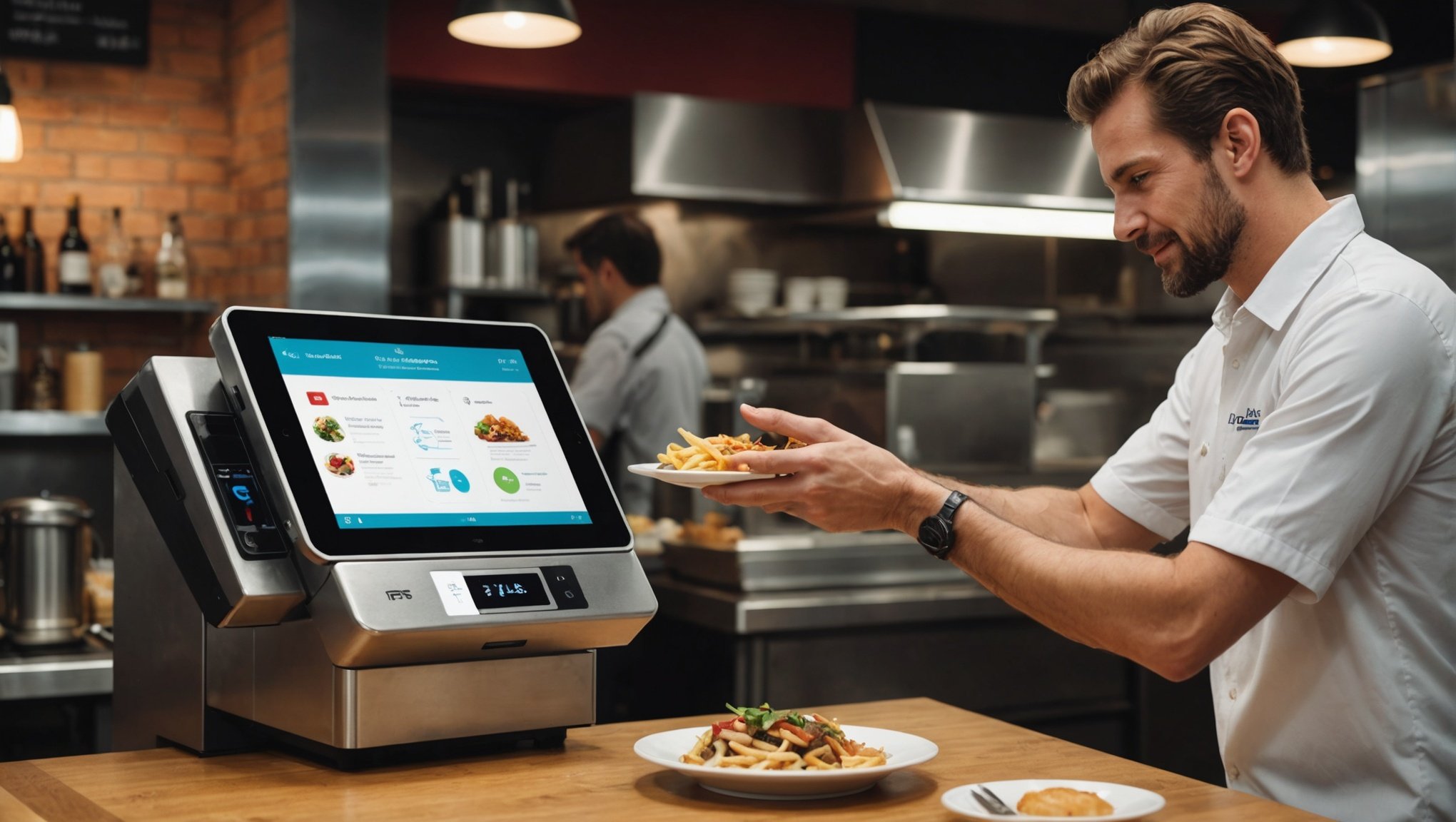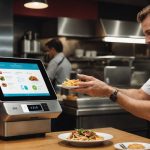The integration of touchless technology in restaurants is transforming hygiene and operational efficiency. With concerns around cleanliness at an all-time high, adopting these innovative solutions not only enhances the dining experience but also builds customer trust. Explore how contactless ordering, automated sanitization, and smart kitchen systems are setting new standards in the food industry. Embracing these advancements is essential for restaurants looking to thrive in a rapidly changing environment. Discover practical steps to implement touchless technology and elevate your establishment’s hygiene practices and effectiveness.
Understanding Touchless Technology in Restaurants
In the modern restaurant industry, touchless technology has become a game-changer, enhancing both hygiene and operational efficiency. Touchless technology encompasses a variety of systems that minimise physical contact, crucial for maintaining high standards of cleanliness and safety. From digital menus to contactless payment systems, these technologies allow customers to enjoy a seamless dining experience without unnecessary physical interaction.
In parallel : Revolutionizing Inventory Management: Leveraging IoT Devices for Enhanced Efficiency in Multi-Location Restaurant Chains
The importance of hygiene in restaurants cannot be overstated, especially in a post-pandemic world. By reducing touchpoints, touchless solutions help mitigate the risk of contamination, ensuring a safer environment for both staff and customers. This leads to increased customer satisfaction, as diners feel more secure in their surroundings.
Operational efficiency is another significant benefit of touchless technology. Self-service kiosks and mobile apps streamline ordering processes, reducing wait times and improving service speed. In the kitchen, smart kitchen technologies and data-driven inventory management systems optimise food preparation and stock levels, minimising waste and enhancing productivity.
Have you seen this : Revolutionizing fine dining staff training: harnessing virtual reality for superior learning experiences
In essence, touchless technology not only elevates the customer experience but also supports the restaurant’s bottom line by improving efficiency and safety. As the industry evolves, embracing these innovations will be key to staying competitive and meeting the growing expectations of today’s diners.
Innovative Applications of Touchless Technology
Touchless technologies are reshaping the restaurant industry, offering innovative solutions that enhance both the dining experience and operational processes.
Self-Service Kiosks
Self-service kiosks are a prime example of touchless technology in action. These systems enable customers to place orders without physical contact, reducing wait times and improving service efficiency. By integrating digital menus and real-time data, restaurants can offer personalised options, enhancing the overall customer experience. This technology also benefits the kitchen by streamlining order processing and reducing errors.
Contactless Payment Systems
Contactless payment systems are another vital component of touchless innovation. By allowing customers to pay via mobile apps or digital wallets, these systems minimise contact and speed up transactions. This not only boosts customer satisfaction but also improves the restaurant’s operational flow, freeing up staff to focus on other tasks.
Smart Restroom Solutions
Incorporating smart restroom solutions further elevates the hygiene standards in restaurants. Automated fixtures, such as touchless taps and hand dryers, reduce contamination risks, contributing to a safer dining environment. Successful implementations in various settings demonstrate the effectiveness of these technologies in maintaining cleanliness and efficiency.
These applications illustrate the transformative potential of touchless solutions in modern food service environments.
Benefits of Touchless Technology for Hygiene and Efficiency
Touchless technology in the restaurant industry offers significant benefits in terms of both hygiene and operational efficiency. By minimising physical contact, these technologies greatly reduce the risk of cross-contamination and disease transmission. This is particularly crucial in maintaining a safe dining experience, where customers can feel secure and focus on enjoying their meals.
In addition to hygiene improvements, touchless solutions contribute to increased speed of service, enhancing overall customer satisfaction. For instance, digital menus and contactless payment systems enable faster transactions, allowing customers to spend less time waiting and more time enjoying their meals. This swift service not only benefits the customers but also boosts the restaurant’s capacity to serve more diners in a given period.
Furthermore, touchless technologies lead to cost savings through streamlined operations. Data-driven systems, such as smart kitchen and inventory management, optimise resource use and reduce waste. By integrating real-time data, restaurants can adjust their supply levels efficiently, ensuring that the kitchen runs smoothly. These benefits make touchless technology an essential component for modern restaurants seeking to enhance both their customer experience and operational efficiency.
Challenges in Implementing Touchless Technology
Implementing touchless technology in the restaurant industry presents several challenges. One significant hurdle is the initial investment costs. Introducing advanced systems such as digital menus, contactless payment, and smart kitchen solutions requires substantial financial resources. This can be a barrier for smaller restaurants with limited budgets, making it difficult to compete with larger establishments that can afford these upgrades.
Another challenge is staff training. Employees need to adapt to new technologies and learn how to operate self-service kiosks and mobile apps efficiently. This requires time and resources for comprehensive training programs, which can disrupt daily operations. Moreover, some staff members may be resistant to change, preferring traditional methods over modern solutions.
Customer acceptance is also crucial. While many diners appreciate the convenience of touchless solutions, others may be hesitant to use unfamiliar systems. Educating customers on the benefits of contactless dining and ensuring an intuitive user interface are essential to overcoming these barriers. Restaurants must strive to create a seamless dining experience that encourages customer satisfaction and fosters trust in the new technologies.
Strategies for Successful Integration of Touchless Technology
Integrating touchless technology in the restaurant industry requires a strategic approach to ensure a seamless transition. A step-by-step guide can be invaluable for restaurants looking to implement these systems effectively.
Begin by assessing your restaurant’s current technology infrastructure and identifying areas where touchless solutions can enhance operational efficiency. This might include digital menus, contactless payment, or smart kitchen technologies. Prioritise systems that align with your restaurant’s goals and customer needs.
Next, involve staff in the integration process. Their experience and feedback are crucial for tailoring solutions to your restaurant’s unique environment. Comprehensive training programs are essential to ensure employees are comfortable with new technologies and can assist customers effectively. This not only boosts staff confidence but also enhances the overall customer experience.
Monitoring and evaluating the effectiveness of touchless systems is critical. Use data-driven insights to assess customer satisfaction and service efficiency. Real-time data can help identify areas for improvement and ensure that the technology continues to meet evolving dining needs. Regularly updating and maintaining these systems is key to sustaining their benefits and keeping pace with industry advancements.
Future Trends in Touchless Technology for Restaurants
As the restaurant industry continues to evolve, the future of touchless technology promises to bring even more innovation and efficiency. Emerging technologies are set to transform dining experiences further, with predictions pointing towards more personalised and data-driven solutions.
One significant trend is the integration of artificial intelligence and machine learning into restaurant systems. These technologies can analyse customer preferences in real time, allowing restaurants to tailor digital menus and self-service options to individual tastes. This level of personalisation not only enhances the customer experience but also increases customer satisfaction by offering more relevant choices.
Another promising development is the advancement of smart kitchen technologies. By leveraging data analytics, restaurants can optimise inventory management and food preparation processes, reducing waste and improving operational efficiency. Contactless payment systems will also become more sophisticated, incorporating biometric authentication for secure and seamless transactions.
The role of data analytics in enhancing touchless solutions cannot be overstated. Restaurants will increasingly use data-driven insights to refine their service offerings and maintain high operational standards. As these technologies continue to advance, the restaurant industry is poised to deliver even more innovative and efficient dining experiences.






